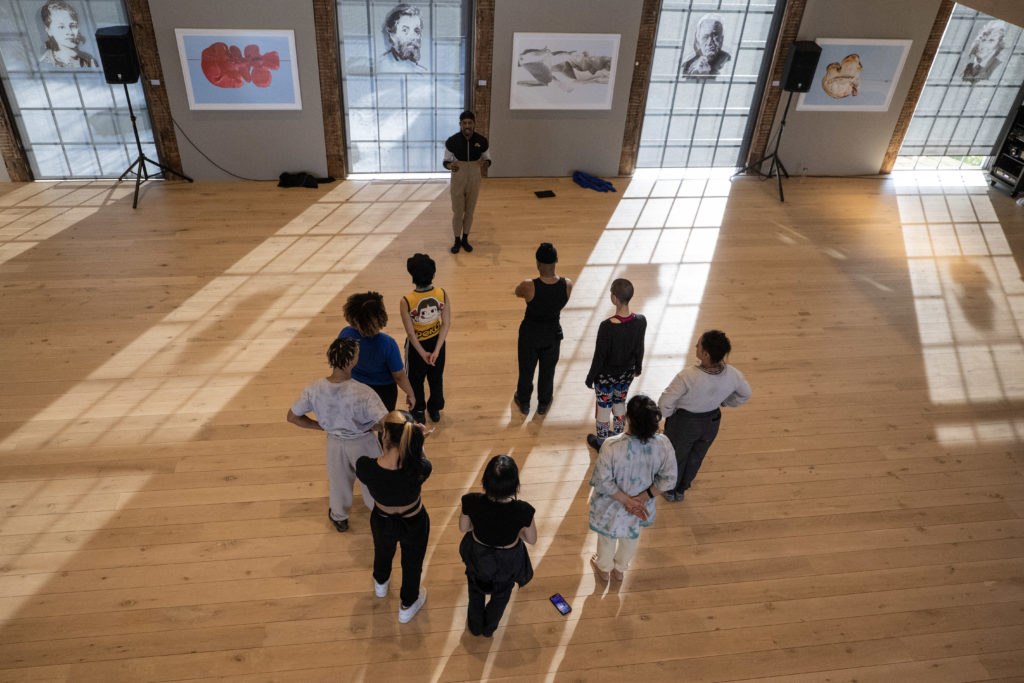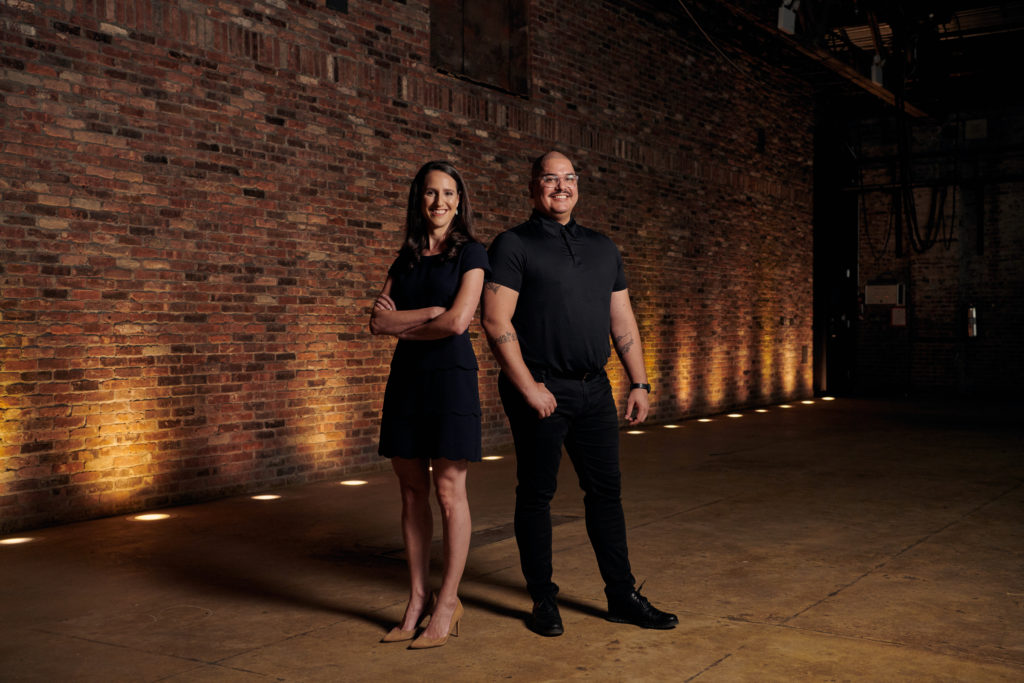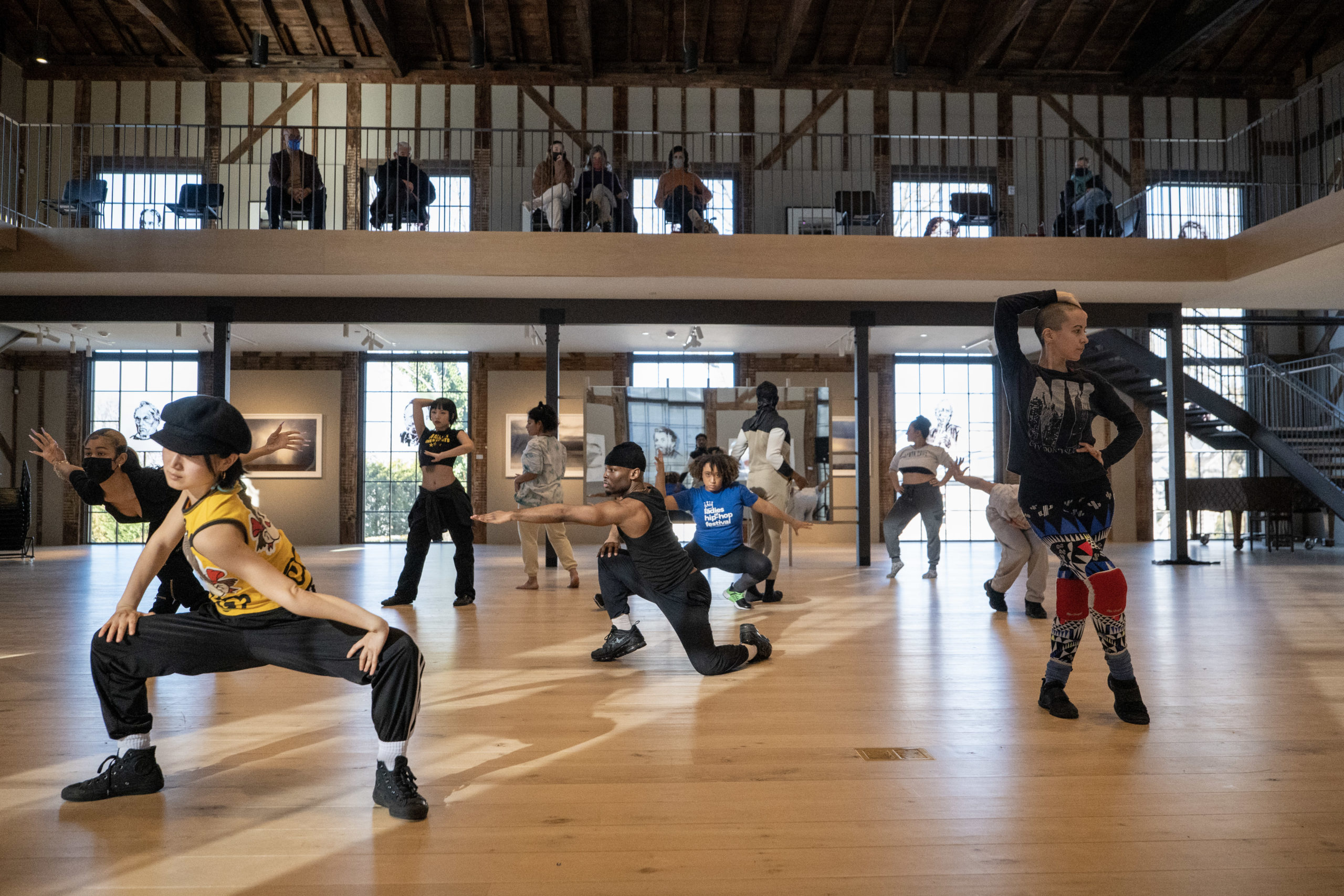LaunchPAD and Chelsea Factory Are Reimagining How Residencies Can Serve Artists
What do artists need right now? It’s a question that’s been asked often in the past several years, and one that has become the guiding ethos of two pandemic-inspired programs in New York that reimagine the artist-residency model: Chelsea Factory, a five-year pop-up initiative based in a renovated space in New York City’s Chelsea neighborhood, and LaunchPAD, a two-year pilot project of Works & Process at the Guggenheim consisting of residencies and showings throughout New York state. Each is engineered as a short-term initiative with generous and flexible support.
Works & Process at the Guggenheim’s LaunchPAD
LaunchPAD is an innovation on Works & Process’ successful bubble-residency program, which hosted 25 residencies between 2020 and 2021. Bubble-residency hosts—like the Bridge Street Theatre in Catskill and the Pocantico Center in Tarrytown—were eager to continue working with dance artists, and the resulting partnerships just made sense: Residency hosts, including newly added partners, had space to spare, but couldn’t necessarily pay artists a living wage, while Works & Process had the budget for artist fees but no space. These partnerships allow the organization to make good on a request that Works & Process executive director Duke Dang was hearing from artists: that they needed support that wasn’t necessarily attached to a performance, and more time and space to devote to the creative process.

LaunchPAD officially began in December, and will support at least 17 residencies in the first half of 2022, including Ladies of Hip Hop, Ryan McNamara and Samantha Figgins. The initiative, which will continue throughout 2023, aims to prioritizes artists who have been disproportionately affected by the pandemic. In addition to one to two weeks of onsite housing, round-the-clock devoted space and a living wage, each recipient will have opportunities to share the creative process with the local community: Les Ballet Afrik’s recent residency at The Church in Sag Harbor, for instance, included a screening of Paris is Burning, an open rehearsal, a vogue class and a final “show and tell.” Works & Process also organizes presentation opportunities for the works, once they are ready, at venues such as the Guggenheim, Lincoln Center and Jacob’s Pillow.
Chelsea Factory
Founded in late 2021 by First Republic Bank chair Jim Herbert, Chelsea Factory was built to last for only five years—the idea being that, as an organization with an expiration date, time and resources can go almost exclusively to artist support rather than long-term planning and fundraising.
The organization is leasing the building formerly occupied by Cedar Lake Contemporary Ballet, which was recently renovated to include a variety of modular performance and rehearsal spaces. To start, they’ll be put to use by a multidisciplinary cohort of resident artists, including choreographers Hope Boykin, Andrea Miller and Leonardo Sandoval, who will each receive an unrestricted $10,000 stipend and a large menu of additional resources—from production support to coaching to transportation. A film fellow will also work with each resident to create video content tailored to the artist’s needs.

The program aims to restart momentum for artists who may have been slowed down by the pandemic, says executive director Lauren Kiel. And though Chelsea Factory itself will only last five years, she hopes to see “the trickle effect of this flexible, nimble, stay-small concept,” she says. “We could leave behind a legacy that allows for a more sustainable institutional fabric in the city.”




